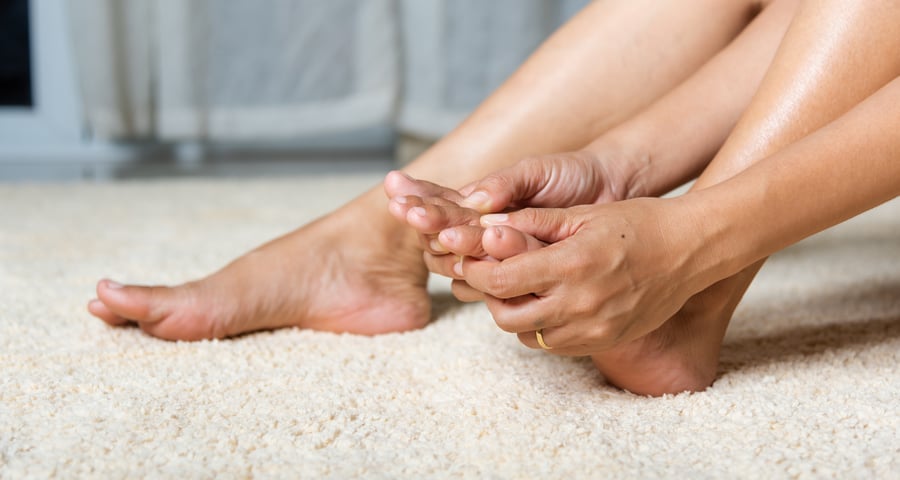Understanding Tailor’s Bunions: Causes, Symptoms and Treatment Options

If you’ve noticed a painful bump near your pinky toe that makes shoes uncomfortable or walking unpleasant, you might be dealing with a Tailor’s bunion—also known as a bunionette. This small but frustrating foot problem can make even your favorite pair of shoes feel unbearable. The good news? Relief is possible with the right care and treatment.
In this post, we’ll explain what causes Tailor’s bunions, how to manage symptoms at home, and when it’s time to visit Sweeney Foot & Ankle Specialists in Magnolia or The Woodlands, Texas, for expert help.
What Is a Tailor’s Bunion?
A Tailor’s bunion—or bunionette—is a bony bump that forms on the outside of the foot at the base of your little toe. It’s similar to a traditional bunion (which appears near the big toe), but it affects the fifth metatarsal bone instead.
This condition occurs when that bone shifts outward and the little toe angles inward, leading to irritation, swelling, and pain. Over time, friction from tight shoes can make the bump larger and more uncomfortable.
Causes and Conservative Treatments for Tailor’s Bunions
Tailor’s bunions often develop because of your foot structure—something you’re usually born with. Other common causes include:
• Wearing narrow or pointed shoes
• Flat feet or overpronation
• Genetics or inherited bone shape
• Arthritis or other joint issues
While you can’t always prevent a Tailor’s bunion, you can reduce discomfort with a few simple adjustments:
• Choose wide, supportive shoes with plenty of toe room.
• Use protective pads or moleskin to cushion the bump.
• Take anti-inflammatory medications to ease swelling and pain.
• Try custom orthotics to correct foot alignment and relieve pressure.
For more information on causes and home care, visit the American College of Foot and Ankle Surgeons’ page on Tailor’s bunions or check out WebMD’s overview of Tailor’s bunions.
When Is Surgery Necessary for a Tailor’s Bunion?
For many people, Tailor’s bunion pain can be managed with footwear changes, orthotics, and other non-surgical treatments. However, if discomfort continues to interfere with your daily activities, surgery may be recommended.
The goal of Tailor’s bunion surgery is to realign the affected bone, reduce the bump, and relieve pressure so you can move comfortably again. Your podiatrist will determine the best procedure for your needs, considering factors such as X-ray results, the severity of the deformity, your age, and activity level. Recovery time varies depending on the procedure, but most patients gradually return to normal routines as healing progresses.
While surgery is the only way to completely remove a Tailor’s bunion, many patients find lasting relief without it. Conservative care often helps slow progression and reduce pain, and surgery is typically reserved for severe cases where pain limits mobility.
If left untreated, a Tailor’s bunion can worsen over time. The bump may enlarge and increase your risk of developing bursitis, hammertoes, or arthritis in the foot.
When to See a Podiatrist for Tailor’s Bunion Pain
If home remedies aren’t easing your Tailor’s bunion pain—or you notice swelling, redness, or changes in how you walk—it’s time to see a specialist. At Sweeney Foot & Ankle Specialists, we offer personalized treatment plans to relieve discomfort and prevent your condition from worsening.
Don’t let foot pain hold you back—schedule an appointment with Sweeney Foot & Ankle Specialists and find lasting relief today.






